How to Help Clients Training for a Bikini Competition (Free Guide)
Learning how to train clients for a bikini competition can considerably diversify your personal training services. However, it’s crucial to have the appropriate knowledge and tools to effectively assist these clients. Specific features of personal training software can be instrumental in achieving this goal. Learn how to guide clients training for a bikini competition and the necessary PT tools in this detailed guide.
- Assisting clients in bikini competition training involves a precise approach that integrates a variety of exercises for muscle toning, cardio for fat loss, and a highly specific dietary regimen.
- Most bikini competition clients will need a well-structured workout and meal plan that promotes muscle definition and low body fat levels while ensuring sufficient nutrient intake.
- The use of workout and assessment software can aid in tracking progress, managing diet, and adjusting routines, ensuring your clients’ journey towards their competition goals is smooth and effective.
Guiding clients towards their bikini competition goals can offer personal trainers a rewarding way to significantly impact their clients’ fitness journeys.
To help clients training for a bikini competition effectively, it’s vital to have the right tools for tracking progress, adjusting plans, and maintaining motivation; that’s where personal training software comes into play. By taking advantage of the features that the best personal training software has to offer, you can guide clients in their bikini competition journey in a way that is efficient, targeted, and rewarding for them.

To get the best personal training software from Exercise.com, book a demo now!
The Importance of Setting Clear Goals for Bikini Competition Training
Preparing for a bikini competition requires a focused and strategic approach. As a trainer, it is important to understand the specific needs and goals of your clients to create a customized training plan that will help them achieve success on the stage. In this article, we will discuss the importance of setting clear goals, understanding the differences between bikini competition and other fitness goals, creating a customized training plan, the role of nutrition, key exercises, maximizing fat loss and muscle definition, incorporating cardiovascular exercise, the benefits of HIIT, strategies for building lean muscle mass, balancing strength training and cardio, overcoming plateaus, the importance of rest and recovery, flexibility and mobility workouts, mental preparation tips, the role of positivity and body image, staying motivated and focused, seeking professional guidance, and common mistakes to avoid.
Setting clear goals is essential when training for a bikini competition. Without a specific target in mind, it can be easy for your clients to lose motivation and become discouraged. Encourage them to set both short-term and long-term goals that are realistic and achievable. Short-term goals may include increasing strength or improving body composition, while long-term goals may involve placing in a specific competition. By having clear goals, your clients will have something to strive for and will be more likely to stay on track.
Understanding the Differences between Bikini Competition and Other Fitness Goals
Training for a bikini competition is different from other fitness goals in terms of the level of intensity and specificity required. Unlike general fitness goals, bikini competition training focuses on developing a lean and sculpted physique that meets specific judging criteria. Your clients will need to prioritize muscle definition and symmetry, as well as develop excellent stage presence and confidence. It is crucial to educate your clients about these differences and help them adjust their training and mindset accordingly.
Creating a Customized Training Plan for Bikini Competition Preparation
Every body is unique, and it is important to create a customized training plan for each client based on their individual goals, fitness level, and schedule. A well-rounded training program should include a combination of strength training, cardio, and flexibility/mobility work. Develop a phased approach that gradually increases the intensity and volume of training over time, allowing for adequate adaptation and recovery. Regularly assess and modify the plan as needed to ensure continued progress and avoid hitting plateaus.
The Role of Nutrition in Preparing for a Bikini Competition
Nutrition is a key component of bikini competition preparation. Your clients should be educated about the importance of fueling their bodies with nutrient-dense foods that support their training and promote muscle growth and fat loss. Help them establish a meal plan that includes a balance of macronutrients, with an emphasis on lean protein, complex carbohydrates, and healthy fats. Encourage them to eat at regular intervals and monitor their portion sizes. Additionally, consider supplementing their nutrition plan with appropriate supplements, such as protein powders and fish oil.
Key Exercises for Sculpting a Bikini-Ready Physique
When training for a bikini competition, it is important to focus on exercises that target the specific muscle groups that contribute to a lean and sculpted physique. Emphasize compound movements, such as squats, deadlifts, bench press, and shoulder press, as they are effective for building overall strength and muscle. Additionally, include isolation exercises that target smaller muscle groups, such as glutes, shoulders, and abs. It is important to balance both heavy and light weights, as well as incorporate a variety of rep ranges to stimulate muscle growth and promote muscle definition.
Maximizing Fat Loss and Muscle Definition through Effective Training Techniques
To maximize fat loss and muscle definition, incorporate training techniques that increase the intensity of the workouts. High-intensity interval training (HIIT) is an effective method for burning calories and increasing metabolism. Implementing supersets and circuit training can also help maintain a high heart rate and promote muscle endurance. Furthermore, encourage your clients to include plyometric exercises, such as box jumps and jump squats, to add an explosive element to their training and engage multiple muscle groups simultaneously.
Incorporating Cardiovascular Exercise into a Bikini Competition Training Regimen
Cardiovascular exercise is an essential component of bikini competition training, as it helps to burn calories, improve cardiovascular fitness, and enhance overall endurance. Incorporate a variety of cardio exercises, such as running, cycling, swimming, or using the elliptical. Aim for a minimum of 150 minutes of moderate-intensity cardio each week, gradually increasing the duration and intensity as your clients progress. Additionally, consider implementing regular steady-state cardio sessions and incorporating HIIT workouts to maximize fat burning potential.
The Benefits of High-Intensity Interval Training (HIIT) for Bikini Competition Prep
HIIT workouts are an excellent addition to a bikini competition training regimen due to their efficiency and effectiveness. HIIT involves short bursts of intense exercise followed by periods of rest or low-intensity activity. This training method not only burns a significant amount of calories during the workout, but it also continues to stimulate fat burning and increase the metabolic rate even after the session ends. Incorporate HIIT workouts into your clients’ training plan 2-3 times per week to optimize fat loss and improve overall cardiovascular fitness.
Strategies for Building Lean Muscle Mass and Toning the Body
Building lean muscle mass and toning the body is a crucial goal for bikini competition training. Encourage your clients to focus on progressive overload, meaning increasing the intensity or volume of the exercises over time. This will help stimulate muscle growth and enhance muscle definition. Additionally, prioritize compound exercises that target multiple muscle groups simultaneously. Incorporate variety into your clients’ training plan by implementing different training techniques, such as drop sets, tempo training, or isometric holds. Finally, emphasize the importance of recovery, as muscles grow during periods of rest.
Balancing Strength Training and Cardiovascular Exercise for Optimal Results
Achieving optimal results in bikini competition training requires a balance between strength training and cardiovascular exercise. While both are important, it is crucial to strike a balance that suits the specific goals and needs of your clients. Too much cardio can hinder muscle growth, while too little will impede fat loss. Work with your clients to find the appropriate balance, considering factors such as their body composition, metabolic rate, and training history. Regularly assess their progress and make adjustments to their training program if necessary.
Overcoming Plateaus and Pushing Past Fitness Limitations during Bikini Competition Training
Plateaus and fitness limitations are common challenges encountered during bikini competition training. Help your clients overcome these obstacles by incorporating periodization into their training plan. Periodization involves breaking training into distinct phases, each with a specific focus and intensity level. This method allows for regular variations in training and helps prevent plateaus. Encourage your clients to challenge themselves by increasing weights, trying new exercises or training methods, and periodically reassessing their goals. Support and motivation are essential during these times to help your clients stay focused and determined.
The Importance of Rest and Recovery in an Intense Bikini Competition Training Schedule
In an intense bikini competition training schedule, rest and recovery are often overlooked but crucial components. Heavy training and restricted calorie intake can take a toll on the body, leading to fatigue, muscle soreness, and an increased risk of injury. Encourage your clients to prioritize quality sleep, as it is during this time that the body repairs and rebuilds muscle tissue. Emphasize active recovery techniques, such as foam rolling, stretching, and light cardiovascular activity, to promote circulation and enhance muscle recovery. Finally, integrate regular rest days into the training plan to avoid overtraining and allow the body to rejuvenate.
Incorporating Flexibility and Mobility Workouts to Enhance Performance on Stage
Flexibility and mobility are often overlooked aspects of bikini competition training, but they play a vital role in enhancing performance on stage. Help your clients incorporate regular flexibility and mobility workouts into their training plan. These workouts should focus on increasing joint range of motion, improving posture, and enhancing overall balance and coordination. Encourage your clients to include exercises such as yoga, Pilates, or dynamic stretching to promote flexibility and prevent muscle imbalances.
Mental Preparation Tips for Navigating the Challenges of a Bikini Competition Journey
Mental preparation is just as important as physical training when it comes to bikini competition. Help your clients navigate the challenges they may face on their journey by emphasizing the power of a positive mindset. Encourage them to visualize their success, set realistic expectations, and develop coping strategies for handling setbacks or obstacles. Remind them that the journey is as important as the end result and that setbacks are opportunities for growth and learning. Lastly, promote self-care practices, such as meditation or journaling, to help manage stress and maintain mental well-being.
The Role of Positivity, Self-Confidence, and Body Image in Competing in a Bikini Competition
Competing in a bikini competition can have a significant impact on one’s self-confidence and body image. It is important to foster a positive and supportive environment for your clients. Encourage them to focus on their personal growth and progress rather than comparing themselves to others. Remind them that bikini competitions are about celebrating individuality and self-expression. Help your clients develop a healthy body image by promoting self-acceptance, body positivity, and a realistic perception of beauty. Encourage them to maintain a healthy relationship with their bodies and prioritize their overall well-being above external validation.
Staying Motivated and Focused Throughout the Entire Bikini Competition Training Process
Staying motivated and focused throughout the entire bikini competition training process can be challenging. Help your clients maintain their motivation by regularly reassessing their goals and celebrating their progress. Keep workouts engaging and diverse to prevent boredom and burnout. Incorporate regular check-ins and progress photos to visually track their transformation. Encourage them to find a support system, whether it be through joining a bikini competition community or having a workout buddy. Finally, remind your clients of their initial reasons for embarking on this journey and the personal growth and fulfillment they will gain throughout the process.
Seeking Professional Guidance: The Benefits of Hiring a Coach or Personal Trainer
Hiring a coach or personal trainer can provide immense benefits for clients training for a bikini competition. A coach or trainer will have the expertise and experience to design a customized training plan, track progress, and provide valuable feedback and support. They can also provide guidance on nutrition, posing, and stage presence. Additionally, having a coach or trainer provides accountability and motivation throughout the entire training process. Encourage your clients to seek professional guidance to ensure they are receiving the highest level of support and expertise.
Common Mistakes to Avoid When Training for a Bikini Competition
When training for a bikini competition, it is important to avoid common mistakes that can hinder progress and potentially harm the body. Some common mistakes include excessive cardio, neglecting strength training, not allowing for adequate rest and recovery, following restrictive diets, and comparing oneself to others. Educate your clients about these pitfalls and help them develop a sustainable and balanced approach to their training and nutrition. Regularly monitor their progress and provide feedback to ensure they are avoiding these common mistakes.
Balancing Work, Family, and Social Life while Preparing for a Bikini Competition
Preparing for a bikini competition requires dedication and discipline, but it is also important to balance other aspects of life. Help your clients develop strategies for managing their time effectively and finding a balance between their training, work, family, and social life. Encourage them to prioritize their goals and align their schedule accordingly. Support them in setting boundaries and communicating their needs with their loved ones. Remind them that self-care is important, and encourage them to find moments of relaxation and enjoyment amidst their busy schedule.In conclusion, training for a bikini competition is a challenge that requires a holistic approach.
As a trainer, it is your role to guide your clients through this journey by setting clear goals, creating a customized training plan, emphasizing the role of nutrition, prescribing key exercises, maximizing fat loss and muscle definition, incorporating cardiovascular exercise, focusing on HIIT, building lean muscle mass, balancing strength training and cardio, overcoming plateaus, prioritizing rest and recovery, incorporating flexibility and mobility workouts, providing mental preparation tips, fostering positivity and self-confidence, maintaining motivation and focus, suggesting professional guidance, preventing common mistakes, and balancing various aspects of life. With your support and guidance, your clients will be able to achieve their bikini competition goals and experience personal growth along the way.
Can you train for a bikini competition without a coach?
While having a coach can provide valuable guidance and support, it is possible to train for a bikini competition without one. However, it requires a strong understanding of training principles, nutrition, posing, and stage presentation. It’s important to educate yourself on proper training techniques, develop a structured workout plan, and have a solid understanding of nutrition to achieve the desired physique. Researching and studying successful bikini competitors, following reputable online resources, and seeking guidance from experienced competitors can help you navigate the preparation process effectively. It’s crucial to stay disciplined, focused, and self-motivated throughout your training journey. As a personal trainer, you should be prepared to address these objections and present the value you will bring as a bikini competition coach.
How do you prepare for a bikini fitness competition?
Preparing for a bikini fitness competition involves a multifaceted approach that includes training, nutrition, posing practice, and mental preparation. Start by setting a realistic timeline and establishing specific goals. Develop a training program that focuses on resistance training to build muscle and sculpt your physique, incorporating exercises that target all muscle groups, including glutes, legs, core, and upper body. Dial in your nutrition by following a well-balanced meal plan that supports fat loss while maintaining muscle mass. Practice posing regularly to enhance your stage presence and presentation. Additionally, prioritize self-care and mental well-being to manage stress and maintain a positive mindset throughout the preparation process.
How long does it take to train for a bikini competition?
The duration of training for a bikini competition can vary depending on several factors, including your current fitness level, body composition, and goals. On average, it takes around 12 to 16 weeks of focused training and dieting to prepare for a bikini competition. This timeframe allows for gradual and sustainable changes in body composition while preserving muscle mass. However, the length of preparation may differ for individuals based on their specific needs and the condition of their physique at the start of the training process. It’s important to consult with a coach or fitness professional to design a customized plan that suits your goals and timeline.
How do you train your glutes for a bikini competition?
To train your glutes for a bikini competition, focus on exercises that target the gluteal muscles from different angles and intensities. Incorporate compound movements such as squats, lunges, deadlifts, and hip thrusts to engage the glutes effectively. Include isolation exercises like glute bridges, kickbacks, and cable pull-throughs to further target and shape the glute muscles. Vary the rep ranges and resistance levels to provide adequate stimulation and progression. Aim for progressive overload over time by increasing weights, reps, or sets as your strength and endurance improve. Consistency and proper form are key to developing strong and well-defined glutes. Additionally, prioritize proper nutrition to support muscle growth and recovery.
What is the ideal body for a bikini competition?
The ideal body for a bikini competition is subjective and can vary depending on individual preferences and judging criteria. Generally, the desired physique is lean, toned, and proportionate, with emphasis on well-developed glutes, a slim waist, and balanced overall muscle development. The body should showcase muscle definition without excessive muscularity. It’s important to note that every competitor is unique, and the ideal body can differ based on the specific competition and judging panel. Focusing on improving your own physique, being confident in your presentation, and showcasing your personal best on stage are essential aspects of a bikini competition.
Do bikini competitors have cheat meals?
Cheat meals or flexible dieting approaches can vary among bikini competitors, and personal preferences may differ. Some competitors may incorporate occasional “treat” meals or flexible food choices within their overall nutrition plan to maintain adherence and support a positive relationship with food. However, it’s important to strike a balance and ensure that the majority of your meals align with your nutritional goals and support your progress. Moderation and mindful eating play key roles in maintaining a healthy and sustainable approach to nutrition throughout the preparation process.
What do judges look for in a bikini competition?
Judges in a bikini competition evaluate several factors, including overall physique, muscle tone, symmetry, balance, stage presence, and confidence. They look for a well-proportioned physique with a slim waist, developed glutes, and balanced muscle development throughout the body. Presentation, including posing, grooming, and confidence, is also crucial. Judges typically prefer a lean and athletic look without excessive muscularity. Each competition may have its own specific judging criteria, so it’s important to review the guidelines provided by the organizing body and understand the specific expectations for the competition you’re participating in.
How do bikini competitors get a smaller waist?
Achieving a smaller waist for a bikini competition involves a combination of targeted training, nutrition, and posing techniques. While it’s important to note that waist size is influenced by genetics and body structure, there are strategies to enhance its appearance. Incorporate core-strengthening exercises such as planks, Russian twists, and cable twists to strengthen and tone the abdominal muscles. Maintain a balanced and calorie-controlled nutrition plan to support overall fat loss, as excess body fat can affect waist size. Focus on posing techniques that emphasize good posture, alignment, and creating the illusion of a smaller waist through posing angles and presentation.
How much cardio should a bikini competitor do?
The amount of cardio for a bikini competitor varies depending on individual factors such as current fitness level, body composition, and the stage of competition preparation. Cardiovascular exercise can be used as a tool to support fat loss and improve cardiovascular fitness. Typically, bikini competitors incorporate a moderate amount of cardio into their training program, gradually increasing the duration and intensity as they progress. This can range from 3 to 5 sessions per week, with each session lasting 20-60 minutes. However, it’s important to find a balance and avoid excessive cardio that may compromise muscle retention or lead to overtraining. Consulting with a coach or fitness professional can help determine the optimal cardio volume for your specific needs and goals.
How do you lean out your legs for a bikini competition?
To lean out your legs for a bikini competition, focus on a combination of resistance training, cardiovascular exercise, and proper nutrition. Incorporate exercises that target the major muscle groups of the legs, such as squats, lunges, leg presses, and hamstring curls, to build muscle and improve definition. Include higher rep ranges and shorter rest periods to stimulate muscular endurance and calorie burn. Incorporate cardiovascular exercises such as cycling, running, or elliptical training to enhance overall fat burning. Maintain a calorie-controlled nutrition plan that supports fat loss while providing adequate protein to support muscle retention. Consistency, progressive overload, and balanced nutrition are key factors in leaning out your legs for a bikini competition.
Why do bikini competitors drink so much water?
Bikini competitors often prioritize proper hydration to support overall health, muscle definition, and stage presentation. Drinking an adequate amount of water helps maintain optimal bodily functions, including metabolism, digestion, and nutrient absorption. It can also contribute to healthier-looking skin and a more defined physique. Additionally, adequate hydration can help reduce water retention and bloating, giving a leaner appearance on stage. However, it’s important to note that the amount of water consumed should be balanced and not excessive, as overhydration can lead to imbalances in electrolytes and potential health risks. Consulting with a coach or nutrition professional can help determine the appropriate hydration strategy for your specific needs.
How much should you weigh for a bikini competition?
The ideal weight for a bikini competition varies depending on several factors, including height, body composition, and personal goals. It’s important to focus on body composition rather than a specific number on the scale. Aim to achieve a lean and well-defined physique with balanced muscle development. Work towards reducing body fat while preserving muscle mass to showcase a fit and toned appearance. The ideal weight can vary significantly between individuals based on their unique body structures and genetic factors. Consulting with a coach or fitness professional can help set realistic weight-related goals and guide you towards achieving a healthy and sustainable physique for a bikini competition.
What should you eat the week of a bikini competition?
The week leading up to a bikini competition is often referred to as “peak week,” and nutrition during this time aims to optimize physique and enhance stage appearance. While nutrition strategies can vary among competitors, some common approaches include a reduction in carbohydrates to promote further fat loss and enhance muscle definition. Protein intake is typically maintained to support muscle retention. Sodium and water intake may be manipulated to help reduce water retention and achieve a more defined appearance. Meals are typically structured to provide a balance of macronutrients and timed appropriately around training and stage activities. It’s important to note that peak week nutrition should be implemented with caution and under the guidance of a coach or nutrition professional to ensure it aligns with your specific needs and goals.
What exercises do you do to train for a bikini competition?
Training for a bikini competition involves a combination of resistance training exercises to sculpt and shape the physique. Common exercises include squats, lunges, deadlifts, hip thrusts, glute bridges, shoulder presses, bicep curls, tricep dips, and core exercises such as planks and Russian twists. These exercises target various muscle groups and help to develop overall muscle tone and definition. It’s important to design a well-rounded training program that addresses all major muscle groups and focuses on both compound movements and isolation exercises. Gradually increase the intensity and weights over time to promote muscle growth and progress towards your desired physique.
What stretches do you do to train for a bikini competition?
Stretching is an important component of a training program for a bikini competition as it helps improve flexibility, joint mobility, and muscle recovery. Incorporate dynamic stretches before your workouts to warm up the muscles and increase range of motion. Examples of dynamic stretches include leg swings, arm circles, and walking lunges with a twist. After your workouts, perform static stretches to help lengthen and relax the muscles. Target areas such as the hamstrings, quadriceps, glutes, hip flexors, and shoulders with stretches like standing hamstring stretches, quad stretches, seated pigeon pose, and chest stretches. Focus on deep, controlled breathing while holding each stretch for 15-30 seconds. Listen to your body and stretch within a comfortable range of motion, avoiding any pain or discomfort.
Use the Best Personal Training Software to Offer a Stellar Client Experience
Training clients for a bikini competition requires a comprehensive and tailored approach. See how Exercise.com can help.

To learn more about how Exercise.com can help you run your fitness business, book a demo now!
Creating Training Plans for Clients Who Want to Compete in a Bikini Competition
Here’s how you can help your clients accomplish their goals by using workout plan creator software to create workout plans, run fitness challenges, offer online workout groups, message clients, and more, all from your very own custom branded fitness apps.
Exercise.com stands out as an all-in-one fitness business management software with comprehensive workout plan sales capabilities. The robust member management, billing & invoicing, and unique fitness assessment tools offer a one-stop solution for fitness business needs. Here’s just some of what you can do with the Exercise.com platform:
Engage with clients via automations.
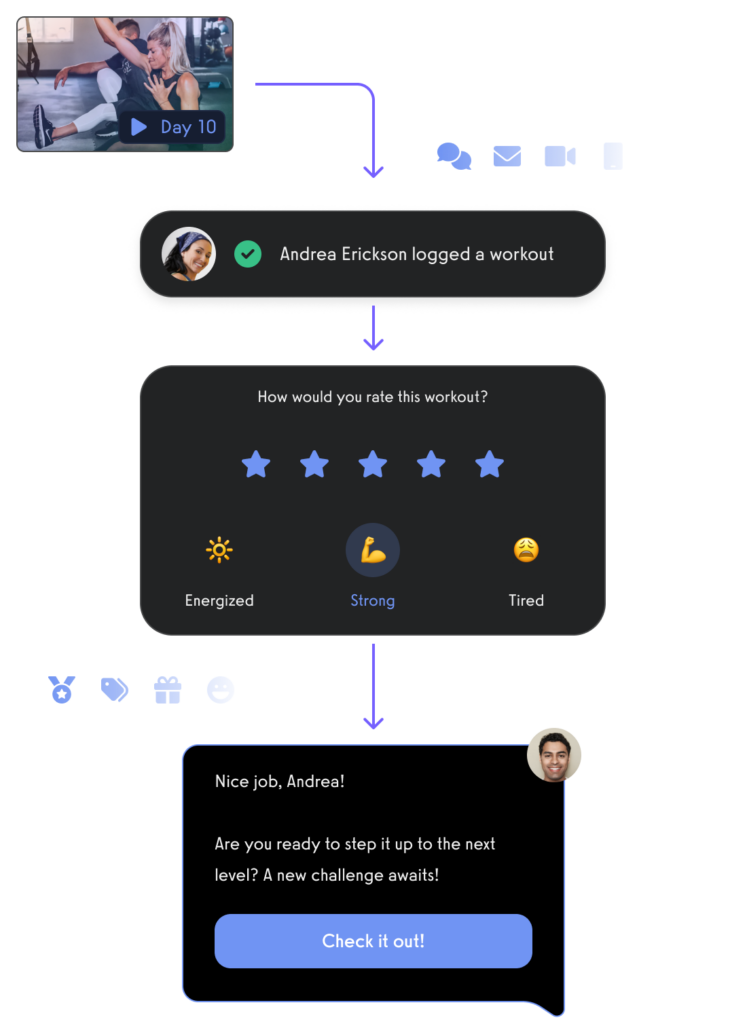
Manage leads with a fitness CRM. Read More: Best CRM Software for Gyms
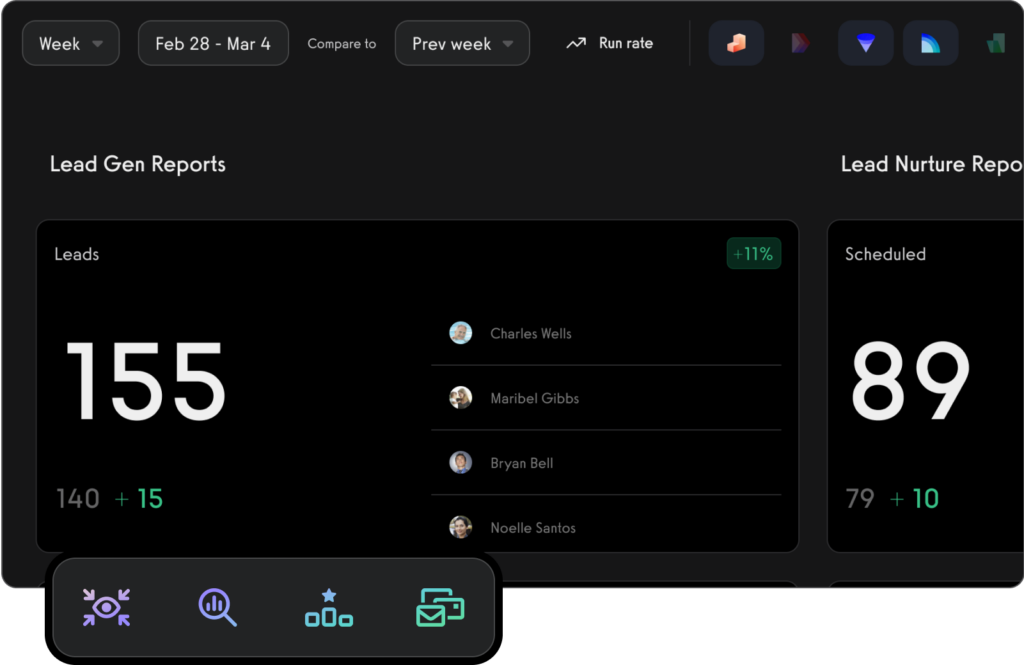
Create and send fitness assessments with ease.
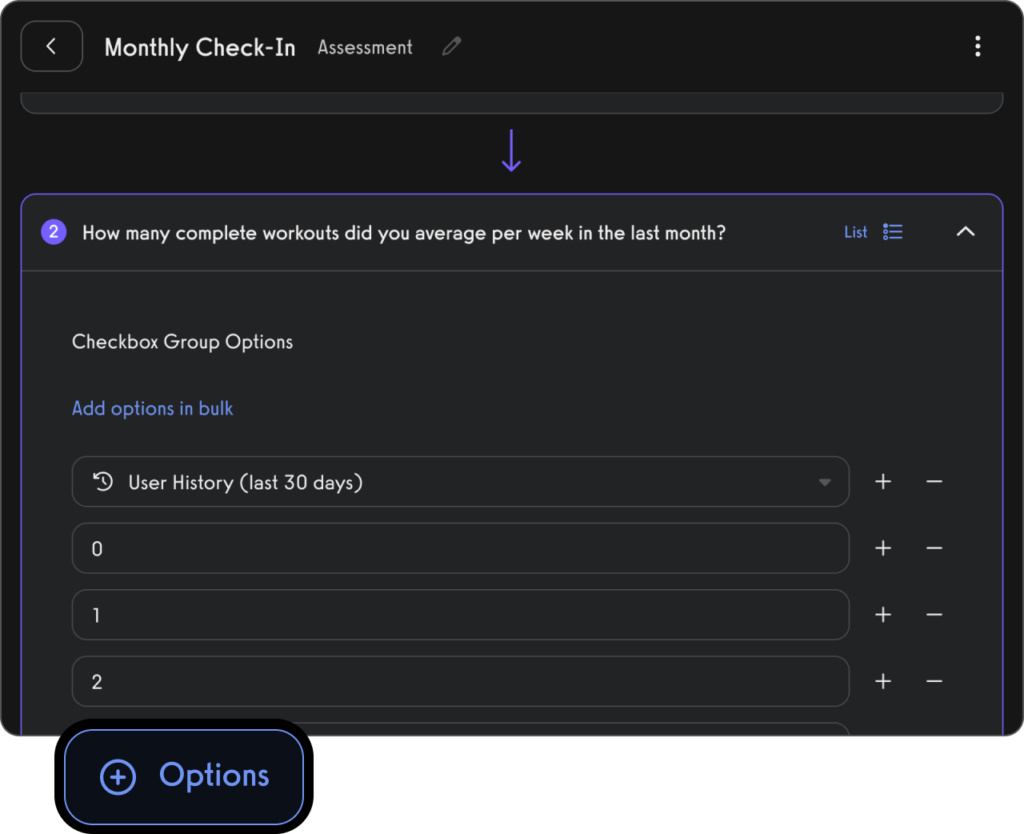
Use fitness habit tracking to inspire and motivate personal training clients (in-person and remote).

Use fitness progress photos to engage with clients.
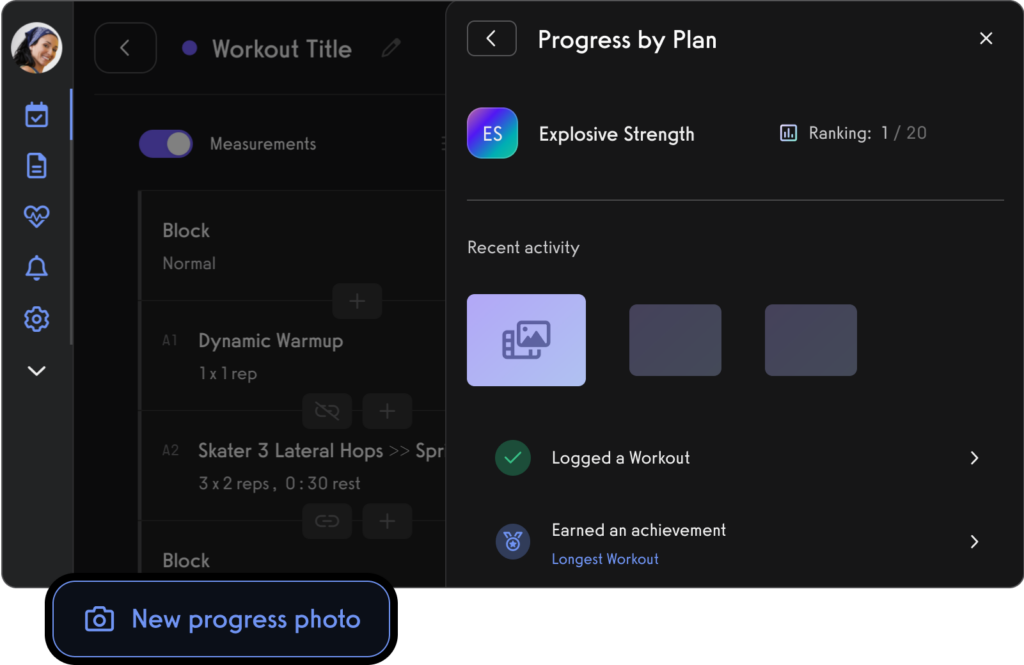
Use fitness leaderboards to track performance and inspire healthy competition.
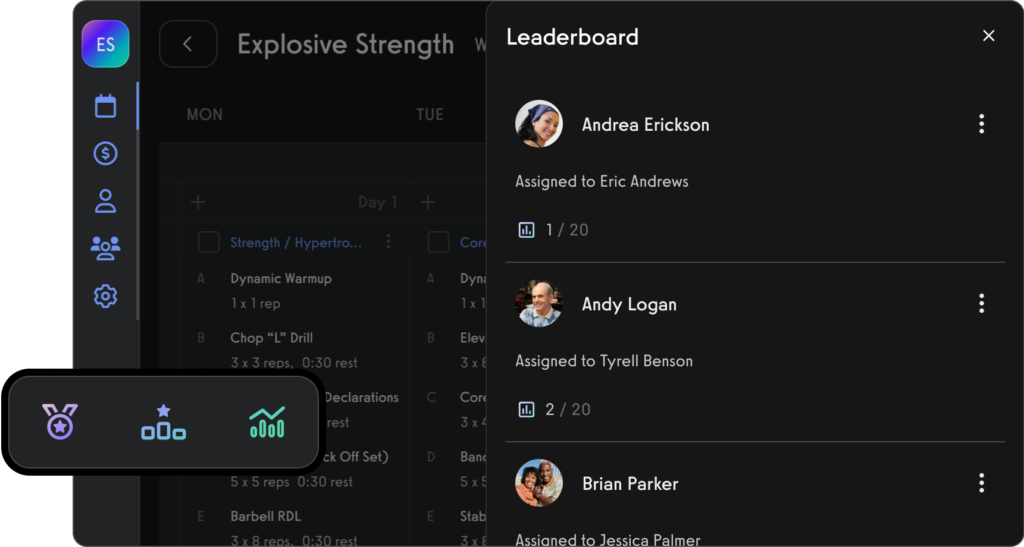
Use the exercise demonstration video library or create your own custom exercise demonstration videos.
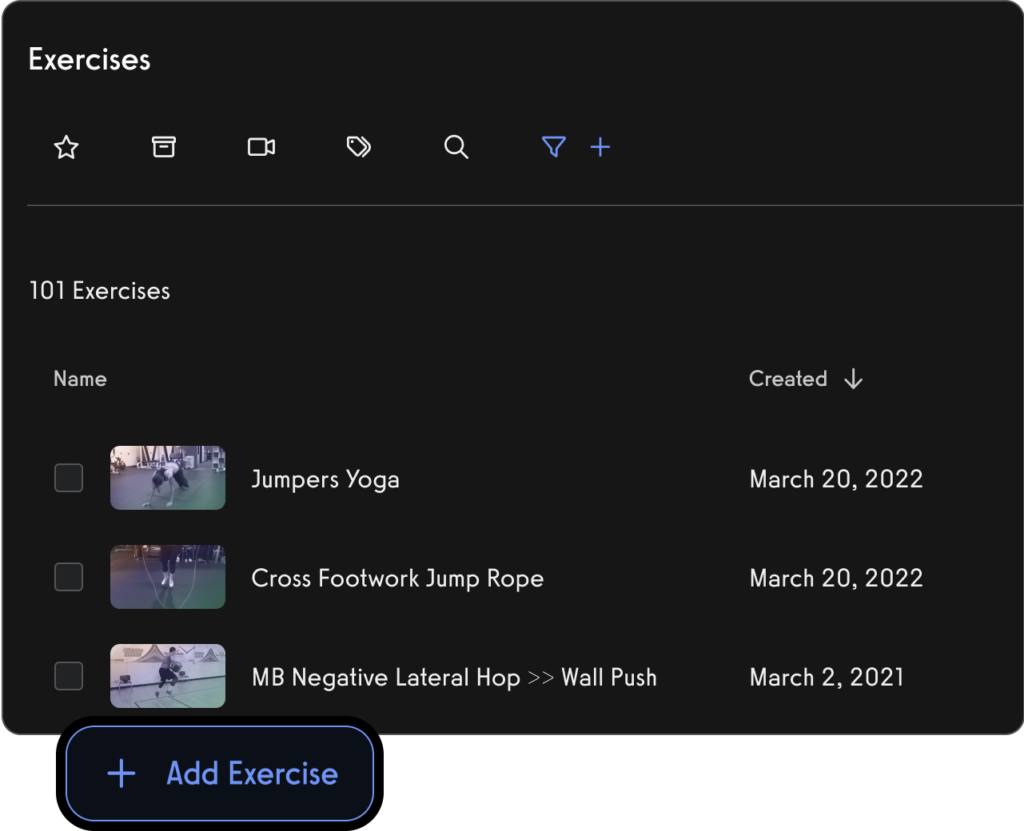
Create workout plans for parents and dependents, teams and more.

Manage personal training clients with ease.
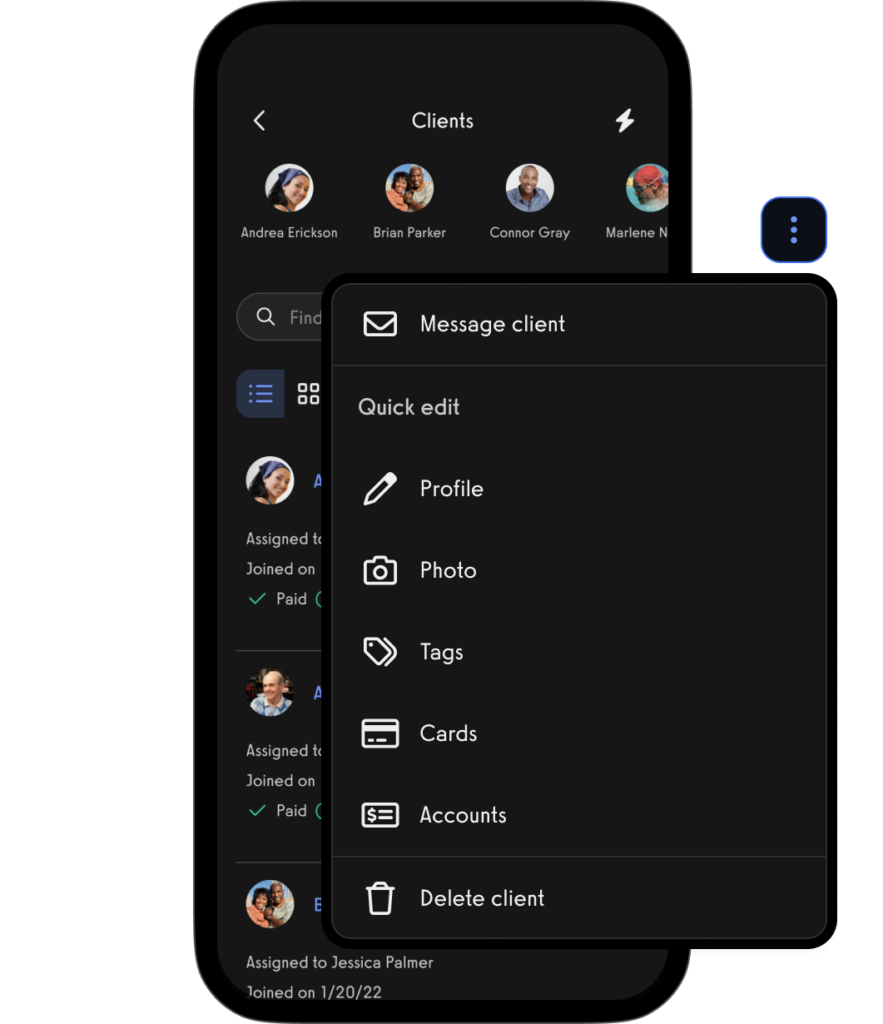
Book appointments for clients (Read More: Best Gym Booking Software)

Create classes and fitness groups

Manage fitness challenges (Read More: 100+ Fitness Challenge Ideas)
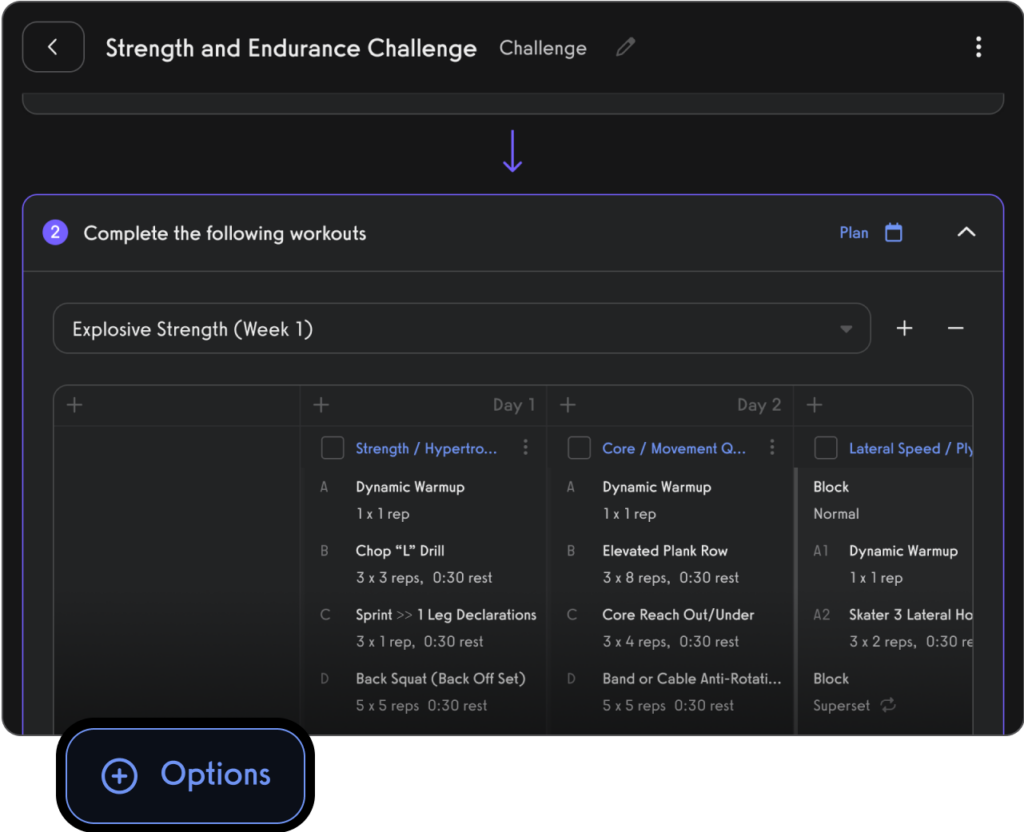
Process payments for open gym, classes, and personal training.

Communicate with gym members, athletes, team members, personal training clients, class members, parents, and dependents via SMS, email, and in-app push notification.
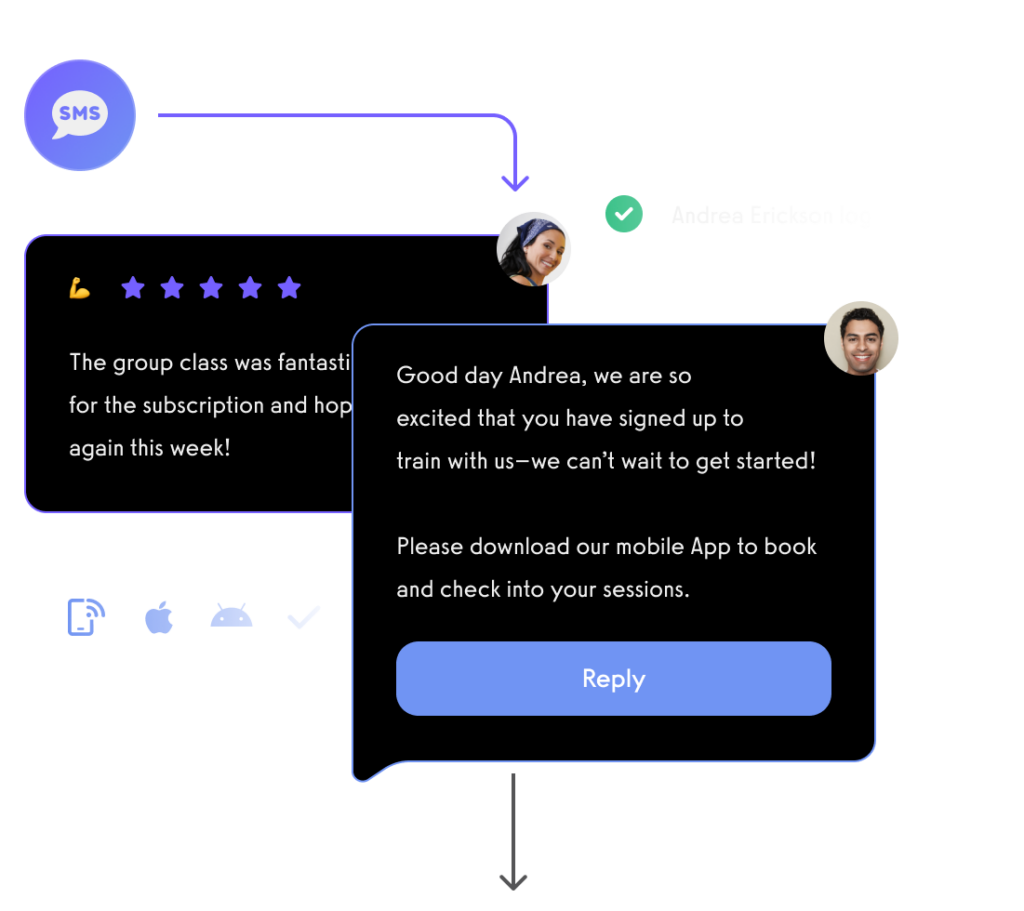
View performance over time, track personal records, and other fitness stats with performance reporting dashboards.

And of course, view all of your fitness business reports easily too.
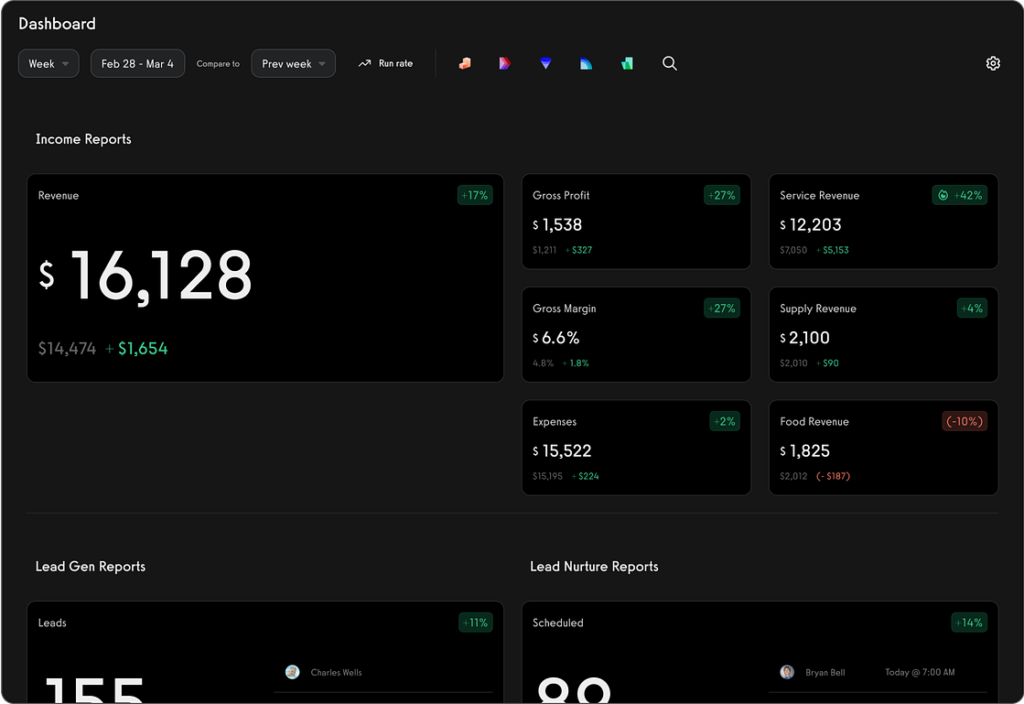
All from your custom-branded fitness apps (Read More: Best Gym Mobile Fitness Apps Software)

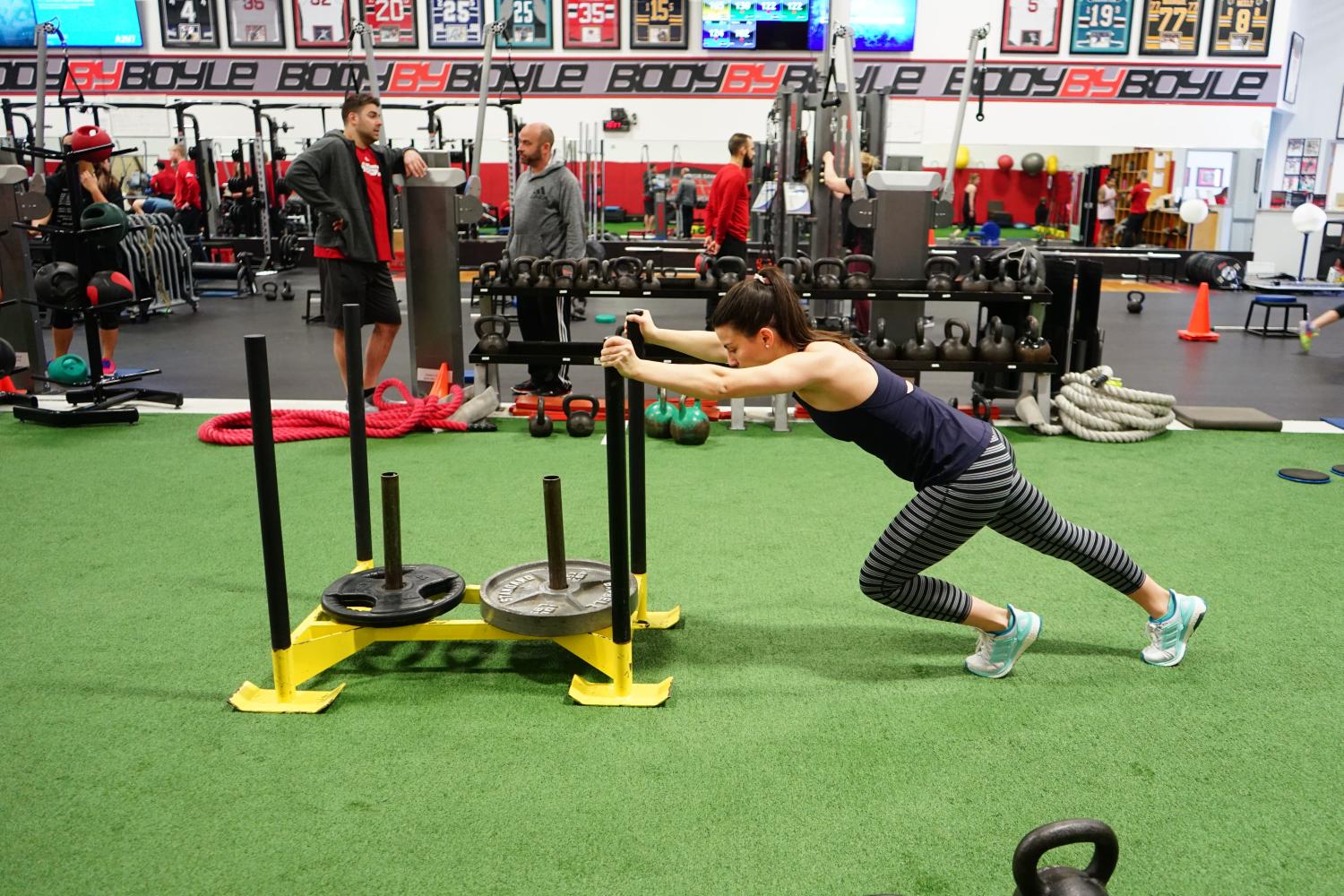
Want to learn how your fitness business can take it to the next level? Get a demo now!









